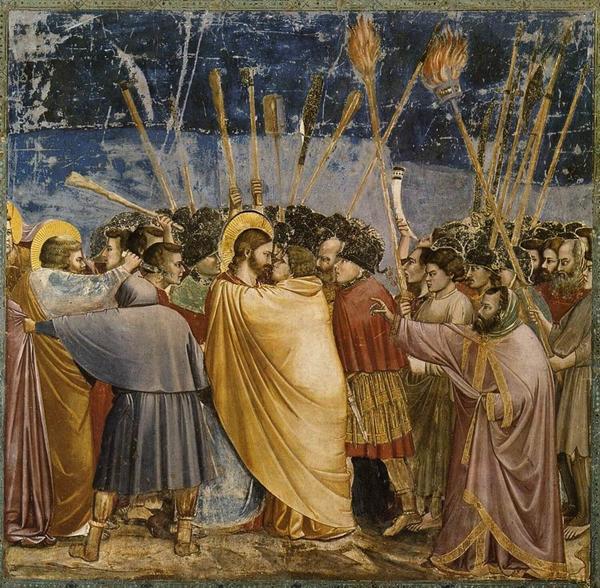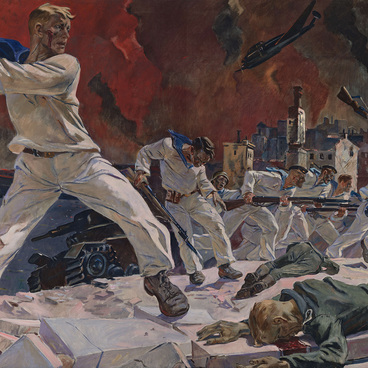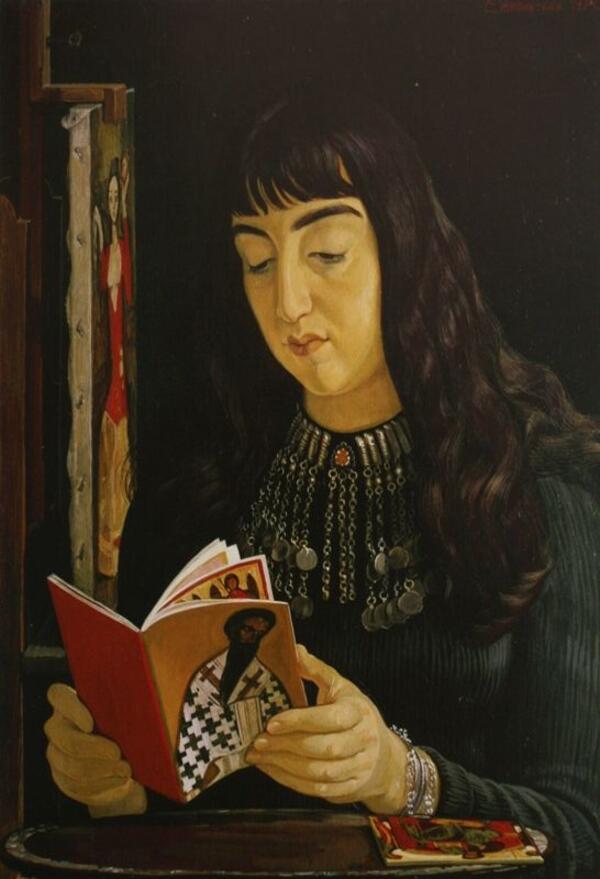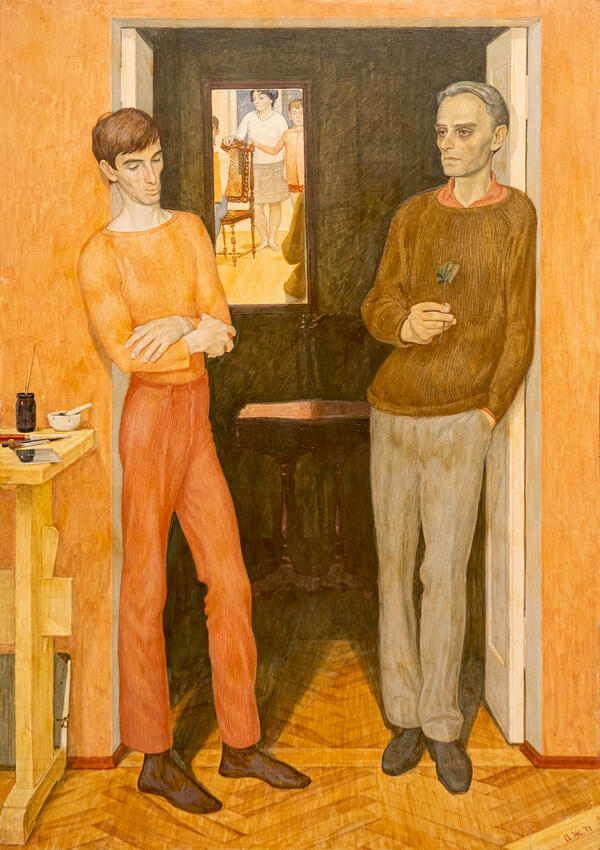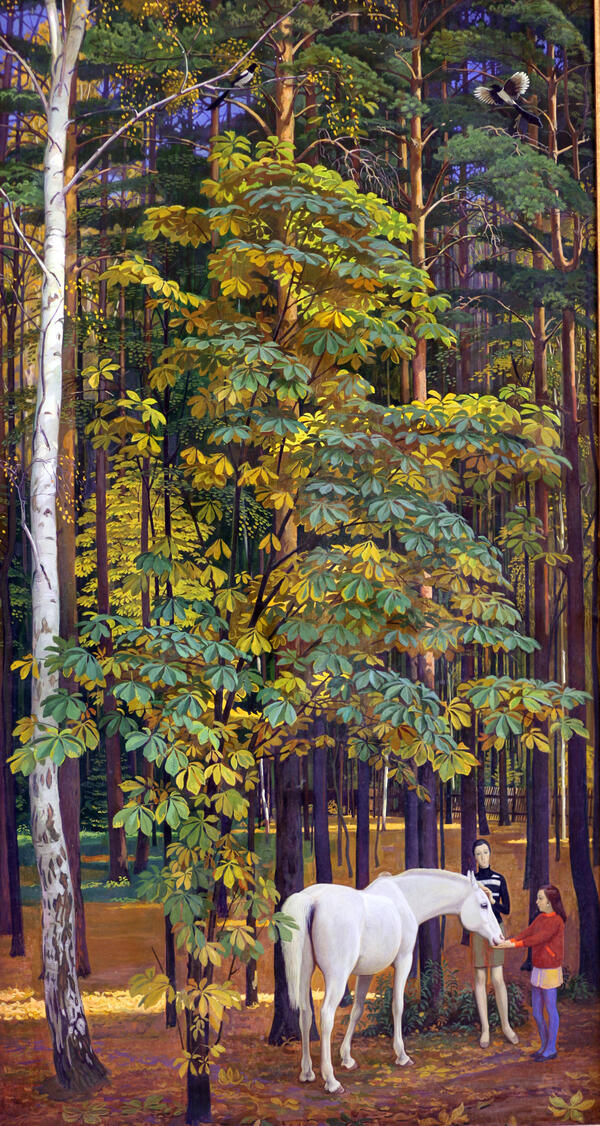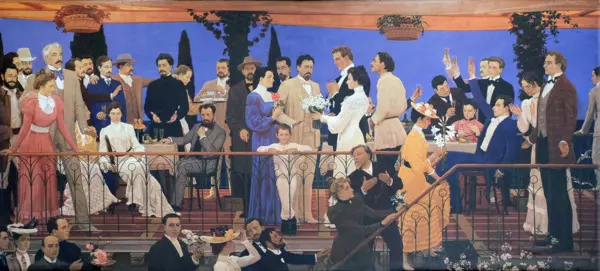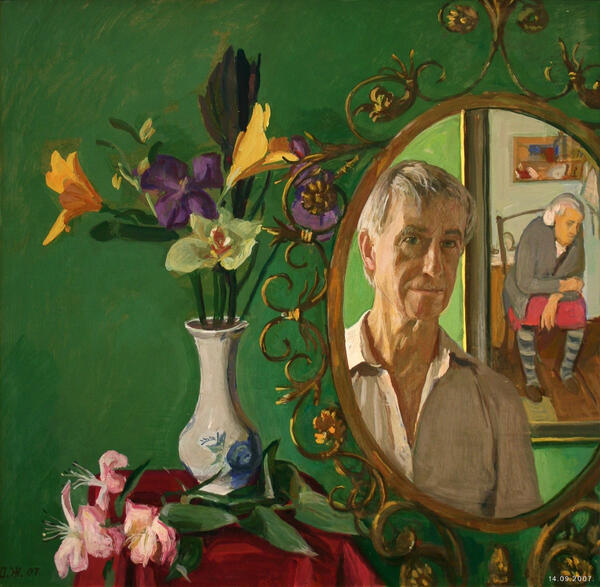Dmitry Zhilinsky is an outstanding artist of the second half of the XX century, member of the Academy of Arts of the USSR, People’s Artist of the RSFSR. He created a new technique based on the synthesis of European, Byzantine and Old Russian art.
Gymnasts of the USSR
Время создания
1964 to 1965
Размер
270x215 cm
Техника
Fiberboard, gesso, tempera
Коллекция
24
Открыть в приложении#3
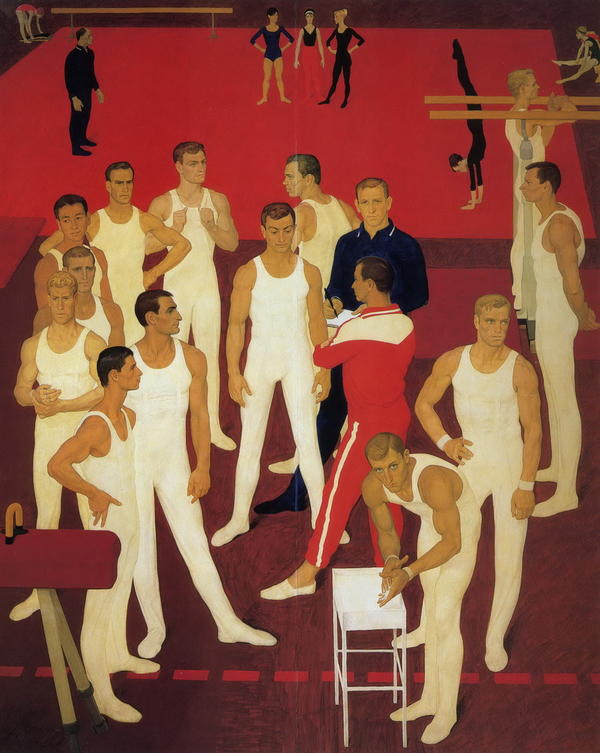
Dmitry Zhilinsky
Gymnasts of the USSR
#4
#6
In the early 1960s, Zhilinsky traveled to Italy, Holland and Belgium where he studied the works of European masters. He was particularly impressed by the early Dutch artists Jan van Eyck, Rogier van der Weyden, and by Italians Giotto di Bondone and Paolo Uccello.
#7
Giotto di Bondone (1266? — 1337). Kiss of Judas. Between 1304 and 1306. Padua, Scrovegni Chapel
#8
Renaissance artists usually painted in oils on wood; they started to use canvas later. Zhilinsky also began to use solid board as the basis for his paintings. He often preferred cheaper materials such as chipboard or hardboard rather than authentic wood panels.
Around the same time, Zhilinsky’s friend, artist Albert Papikyan, presented him with some tempera paints. Tempera is paint consisting of pigment and a binder: egg yolk or synthetic emulsion. It was used by Byzantine and Old Russian icon painters and artists before the invention of oil paints.
#9
Oil on canvas, the medium that Zhilinsky had learned at the Moscow Art Institute, was no longer producing the results he was looking for. The dense and prominent texture of oil paint made it difficult to reproduce the pure colors that the painter wanted to achieve. He started to paint with tempera on gesso, a priming, which consists of chalk mixed with glue. Gesso is also used in icon painting.
#10
One of the first works in this technique was the portrait ‘Gymnasts of the USSR’. The author depicted the Soviet national gymnastics team in preparation for the XVIII Olympic Games. These are sports heroes, gold medal winners at the Olympic Games, world and European championships. Among them are Polina Astakhova, Larisa Latynina, Boris Shakhlin, Yury Titov.
In the twentieth century, these ancient media came as something novel. However, Zhilinsky’s creative style was also bold and innovative. The artist abandoned tones and mid-tones and painted in large patches of pure color. These are the so-called local colors: the own colors of objects undistorted by light or reflections from nearby objects.
#11
Due to the lack of shadows, the space of the painting lacks depth. The author conveyed volume through expressive silhouettes and lines. The foreground and the background are somewhat overlapping; the artist does not quite adhere to scale. The female gymnasts’ figures in the background are very small and flat, as it often happens on icons. At the same time Zhilinsky carefully depicted the athletes’ faces, expressing the individuality of each of them.
#12
At the exhibition at the Union of Artists of the USSR, the picture was highly praised, but even the author’s friends did not recognize it as pictorial art because it was painted in tempera. For a long time, the ‘Gymnasts’ dwelled in the graphics department, and only later, at the All-Union Exhibition, the picture was moved to the paintings section.
Zhilinsky was an innovator of contemporary art. The audience was amazed by the vivid colors, the dynamic composition and monumentality of his works. His unique artistic method became a true phenomenon of its time and opened up new directions for the development of arts for the decades to come.
#13
The State Russian Museum
читать дальшескрыть
00:00
00:00
1x
Gymnasts of the USSR
Время создания
1964 to 1965
Размер
270x215 cm
Техника
Fiberboard, gesso, tempera
Коллекция
24
Открыть в приложении
Поделиться

